 Imagine a world where Internet performance is controlled by the company who owns the cables and where speed is sold to the highest bidder. Imagine a world where some Web sites load faster than others, where some sites aren’t even visible and where search engines pay a tax to make sure their services perform at an acceptable speed. That’s the world US Telecommunications companies (telcos) such as AT&T, Verizon, Comcast and Time Warner are trying to create.
Imagine a world where Internet performance is controlled by the company who owns the cables and where speed is sold to the highest bidder. Imagine a world where some Web sites load faster than others, where some sites aren’t even visible and where search engines pay a tax to make sure their services perform at an acceptable speed. That’s the world US Telecommunications companies (telcos) such as AT&T, Verizon, Comcast and Time Warner are trying to create.
The debate centres around the ongoing review of the US Telecommunications Act and the concept of network neutrality (net-neutrality). The telcos have been lobbying congress to allow them to introduce priority services ensuring that the fastest data transfers and best download speeds are sold at a premium rate. The telcos position is widely seen to be in conflict with the most fundamental assumptions about what the Internet actually is.
To the lay person, it may seem like a laughable proposition. As Cory Doctorow (FreePress) put it, “It’s a dumb idea to put the plumbers who laid a pipe in charge of who gets to use it.” And yet the US congress is swaying towards the view of the telcos, so what’s going on?
The debate was kick-started in November 2005 when AT&T CEO, Ed Whitacre commented, “Now what they would like to do is use my pipes free, but I ain’t going to let them do that because we have spent this capital and we have to have a return on it. So there’s going to have to be some mechanism for these people who use these pipes to pay for the portion they’re using. Why should they be allowed to use my pipes?”
Whitacre’s argument boils down to the assumption that services such as Google and Yahoo are somehow freeloading on the infrastructure owned by the telcos. Cory Doctorow points out a fundamental flaw in his reasoning, “Internet companies already are paying for bandwidth from their providers, often the same companies that want to charge them yet again under their new proposals.”
![]() As Doctorow and other commentators have observed, Internet users and businesses already pay proportionally for their use of the net, allowing the owners of the infrastructure to take a further cut distorts the market in favour of those with the deepest pockets and threatens innovation and the development of new services.
As Doctorow and other commentators have observed, Internet users and businesses already pay proportionally for their use of the net, allowing the owners of the infrastructure to take a further cut distorts the market in favour of those with the deepest pockets and threatens innovation and the development of new services.
Tim Berners-Lee, inventor of the World Wide Web, weighed in to the argument saying “Net neutrality is this: If I pay to connect to the Net with a certain quality of service, and you pay to connect with that or greater quality of service, then we can communicate at that level. That’s all. Its up to the ISPs to make sure they interoperate so that that happens.”
The debate in the US is split largely along partisan lines with Republicans favouring the telcos and Democrats siding with the pro-neutrality lobby. Since Whitacre started the debate, the telcos have promoted their case heavily using extensive television advertising and lobby groups. The pro-neutrality group (comprising the bulk of the industry) has organised itself with activist Websites such as save the internet and has signed up over a million individuals to its petition, but the campaign is not going well. On May 8th the House of Representatives passed the “Communications Opportunity, Promotion and Enhancement Act of 2006,” or COPE Act while defeating an amendment (the so-called Internet Platform for Innovation Act of 2006) that would have provided protection for neutrality. The next opportunity for progress comes this week when the Senate votes on Internet Freedom Preservation Act of 2006 which also carries a neutrality friendly amendment.
Today, the legal Website Outlaw reported that two US Attorney Generals (Eliot Spitzer and Bill Lockyer) have backed the pro-neutrality cause. Spitzer wrote a letter stating that “Congress must not permit the ongoing consolidation of the telecommunications industry to work radical and perhaps irrevocable change in the free and neutral nature of the Internet”.
Whatever Spitzer and Lockyer’s influence, many commentators believe this kind of corporate influence on communications can only lead to economic censorship. As law professor and copyright activist Lawrence Lessig said in 2004 “The Internet was designed to allow competition and let the best products and content rise to the top. Without a policy of network neutrality, some of those products could be blocked by broadband providers”.
 When it comes to World Cup football Web coverage in the UK, the BBC isn’t just dribbling past its rivals – it’s positively crushing past them, according to figures released by Nielsen NetRatings.
When it comes to World Cup football Web coverage in the UK, the BBC isn’t just dribbling past its rivals – it’s positively crushing past them, according to figures released by Nielsen NetRatings.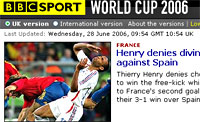 Interestingly, the Sporting Life site proved the ‘stickiest’ with punters spending the longest time on the site (an average of 36 mins each).
Interestingly, the Sporting Life site proved the ‘stickiest’ with punters spending the longest time on the site (an average of 36 mins each). Channel 4 has today launched a new broadband Simulcast service, making their live TV schedule available online for viewing, for free.
Channel 4 has today launched a new broadband Simulcast service, making their live TV schedule available online for viewing, for free. Channel 4 has, however, said that it is negotiating with US studios to add their content at a later date.
Channel 4 has, however, said that it is negotiating with US studios to add their content at a later date.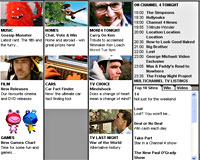 Appearing in a thundercloud of enthusiasm, Channel 4 CEO Andy Duncan was on-beam and on-message and rapidly hit evangelical overdrive, describing the Web transmission as an opportunity “to build on what Channel 4 has always done – stimulate, infuriate, debate, create,” adding that he didn’t see the digital revolution as an attack on Channel 4’s power as a public broadcaster, but as a “fantastic opportunity,”
Appearing in a thundercloud of enthusiasm, Channel 4 CEO Andy Duncan was on-beam and on-message and rapidly hit evangelical overdrive, describing the Web transmission as an opportunity “to build on what Channel 4 has always done – stimulate, infuriate, debate, create,” adding that he didn’t see the digital revolution as an attack on Channel 4’s power as a public broadcaster, but as a “fantastic opportunity,”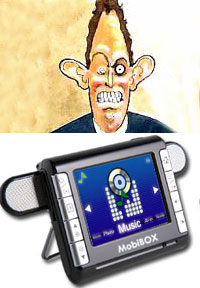 Smaller than a pack of cards and packed with enough whizz-bang functionality to keep a hyperactive cokehead entertained for hours, MobiBox’s new MP410 multimedia recorder and player packs a big punch for the price.
Smaller than a pack of cards and packed with enough whizz-bang functionality to keep a hyperactive cokehead entertained for hours, MobiBox’s new MP410 multimedia recorder and player packs a big punch for the price.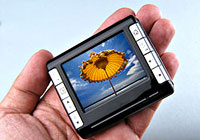 The MP410 also features a pair of folding out speakers for added ‘Tony Blair’ appeal, and comes with a pull-out stand for desk viewing.
The MP410 also features a pair of folding out speakers for added ‘Tony Blair’ appeal, and comes with a pull-out stand for desk viewing.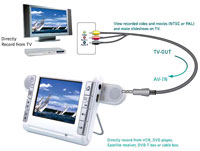 Interface 2 in 1 MiniUSB (USB 2.0/power in)
Interface 2 in 1 MiniUSB (USB 2.0/power in)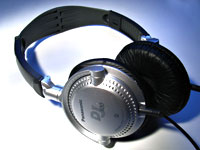 Although in-ear bud headphones are all well and good for strutting down the street with your iPod/PDA/smartphone in your pocket, when it comes to DJing or listening at home, you might need something a little more substantial.
Although in-ear bud headphones are all well and good for strutting down the street with your iPod/PDA/smartphone in your pocket, when it comes to DJing or listening at home, you might need something a little more substantial.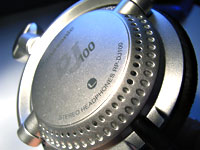 Designed for DJs
Designed for DJs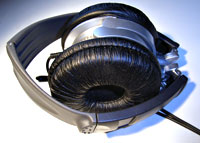 The sound
The sound So after our own (paid for) headphones conked out after just four months and with no chance of a replacement after voiding our guarantee with the attempted emergency repair, we’ve had to rapidly downsize our enthusiasm.
So after our own (paid for) headphones conked out after just four months and with no chance of a replacement after voiding our guarantee with the attempted emergency repair, we’ve had to rapidly downsize our enthusiasm. Something will go wrong sooner or later with nearly one-fifth of all notebooks, with a new hardware component needed to sort the problem, according to a new survey by industry analysts Gartner.
Something will go wrong sooner or later with nearly one-fifth of all notebooks, with a new hardware component needed to sort the problem, according to a new survey by industry analysts Gartner. Laptops have also shown a significant improvement, with features like suspension mounting of hard drives and rubber bumpers between laptop lids and keyboards helping keep the damage tally down.
Laptops have also shown a significant improvement, with features like suspension mounting of hard drives and rubber bumpers between laptop lids and keyboards helping keep the damage tally down. Motherboard fry-ups and hard drive breakdowns are now the two main sources of failure for desktops, a situation brought about by the increasingly complexity of the things, with more components being integrated into the motherboard.
Motherboard fry-ups and hard drive breakdowns are now the two main sources of failure for desktops, a situation brought about by the increasingly complexity of the things, with more components being integrated into the motherboard.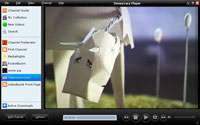 As if you don’t already spend enough time looking at your computer, the folks at Democracy would like to introduce you to the delights of free Internet TV.
As if you don’t already spend enough time looking at your computer, the folks at Democracy would like to introduce you to the delights of free Internet TV.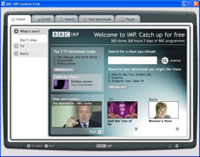 Democracy is a not-for-profit organisation dedicated to the principal of free, open access to media through the use of open-source software.
Democracy is a not-for-profit organisation dedicated to the principal of free, open access to media through the use of open-source software.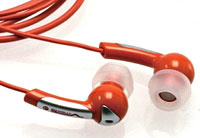 More often than not, the in-ear headphones that come bundled with MP3 players are weedy affairs, producing a feeble floppy fart of a low end when you’re looking for a thunderous bass.
More often than not, the in-ear headphones that come bundled with MP3 players are weedy affairs, producing a feeble floppy fart of a low end when you’re looking for a thunderous bass.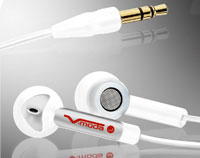 The human ear can only hear frequencies around 20 to 20,000 Hz, and that’s only when you’re young and healthy.
The human ear can only hear frequencies around 20 to 20,000 Hz, and that’s only when you’re young and healthy. This improved the sound no end, and the ‘phones are great for using on planes and trains when you want to hear as little exterior noise as possible and don’t fancy forking out for expensive noise cancelling units.
This improved the sound no end, and the ‘phones are great for using on planes and trains when you want to hear as little exterior noise as possible and don’t fancy forking out for expensive noise cancelling units.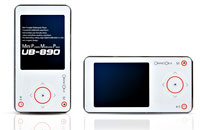 Lined up on the new product runway and awaiting clearance for take off is the slick looking Oracom UB890 portable media player.
Lined up on the new product runway and awaiting clearance for take off is the slick looking Oracom UB890 portable media player.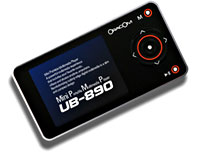 There’s also built in equaliser and 3D sound and onscreen visual effects to keep the easily-bored entertained.
There’s also built in equaliser and 3D sound and onscreen visual effects to keep the easily-bored entertained.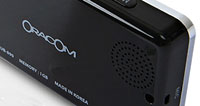 Rounding off the gadget-fest, there’s also an alarm clock, sleep timer, built-in speakers (500mW + 500mW) and an iPod-esque ‘Touch Sensor Key Pad’ for shimmying through the menus.
Rounding off the gadget-fest, there’s also an alarm clock, sleep timer, built-in speakers (500mW + 500mW) and an iPod-esque ‘Touch Sensor Key Pad’ for shimmying through the menus.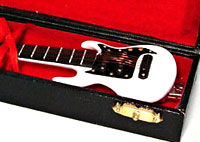 Straight out of the, “What’s The Chuffin’ Point Of That” Dept comes two utterly daft USB devices.
Straight out of the, “What’s The Chuffin’ Point Of That” Dept comes two utterly daft USB devices.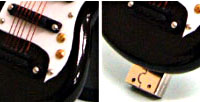 But if you fancy indulging in a bit of micro air guitar work while carrying around a paltry amount of over-priced flash memory, point your credit card in the direction of geekstuff4u.com
But if you fancy indulging in a bit of micro air guitar work while carrying around a paltry amount of over-priced flash memory, point your credit card in the direction of geekstuff4u.com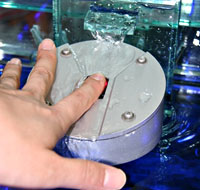 Underwater windows
Underwater windows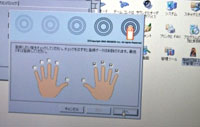 We’re not sure at what depth the thing keeps on working or why anyone would want to be logging on to Windows in their Speedos, but there’s an English language version of the software available, and the whole sub-aqua caboodle could be yours for just €137.
We’re not sure at what depth the thing keeps on working or why anyone would want to be logging on to Windows in their Speedos, but there’s an English language version of the software available, and the whole sub-aqua caboodle could be yours for just €137.